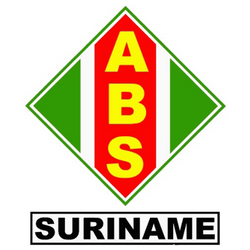The consumer price index (CPI) reflects the development of consumer prices of a fixed basket of goods and services (basic basket) over a particular period of time (basic period).
The composition of the basic CPI basket preferably follows a household budget survey.
Since 2003, it has been an ILO requirement to perform such surveys every five years. ABS seeks to comply with this requirement.
The survey preferably extends over a period of one year.
The current outlets or measuring points and the basic basket of goods and services are the result of the 2013/2014 household budget survey and are located in Paramaribo, Wanica, Nickerie, Coronie, Saramacca, Commewijne and Para.
Examples of outlets or measuring points are supermarkets, grocery stores, markets, clothes shops, shoe shops, other points (e.g. doctors).
The number of measuring points per domain
| Domain | Measuring points |
|---|---|
| Paramaribo & Wanica (ParWan) | 170 |
| Nickerie (inclusief Wageningen) | 115 |
| Coronie & Saramacca (CorSar) | 105 |
| Commewijne | 120 |
| Para | 120 |
| Total | 630 |
The basic basket of these domains is compounded and the prices are measured almost daily in each domain.
Data collection
Data on the prices of goods and services is collected using standard survey forms that include a description of each item, as well as its number, weight and brand.
The measuring points are established through the household budget survey.
The collection of retail prices of the 316 goods and services from the basic package for household consumption is broken down as follows:
survey by head office (Paramaribo) for Paramaribo, Wanica, Saramacca and Para,
survey by Eastern Area office (Commewijne) for Commewijne,
survey by Western Area office (Nickerie) for Nickerie (including Wageningen) and Coronie.
Number of interviewers per office
| Office | Number of interviewers |
|---|---|
| Paramaribo | 4 |
| Eastern Area | 2 |
| Western Area | 5 |
| Total | 11 |
Data processing
Each office enters and processes the data itself. The offices for the Eastern Area (Commewijne) and the Western Area (Nickerie) then submit the data to the CPI department of the head office in Paramaribo, which has primary responsibility for the compilation of the price index and the inflation rate.
The retail prices included in the data are entered into an ACCES database.
A weighting coefficient (weighting factor) based on the household budget survey is assigned to each category of expenditure.
A weighting coefficient (weighting factor) reflects the relevance of each spending category in the overall (basic) basket.
The 316 items are then clustered into 11 main groups, the basic period being April 2016 – June2016.
| NR | Main groups | Weightings (per 1 000) |
|---|---|---|
| 1 | Food and non-alcoholic beverages | 313 |
| 2 | Alcoholic beverages and tobacco | 18 |
| 3 | Clothing and footwear | 39 |
| 4 | Housing and utilities | 229 |
| 5 | Home furnishings | 52 |
| 6 | Healthcare | 47 |
| 7 | Transportation | 123 |
| 8 | Communication | 43 |
| 9/10 | Recreation, culture and education | 34 |
| 11 | Food away from home | 8 |
| 12 | Miscellaneous goods and services | 94 |
Publication
The price index and inflation rate are published on or before the 22nd day of each month; they are sent by fax and/or email to the Vice President, the Ministers of Finance and Trade, Industry and Tourism, the Governor of the Central Bank and the President of the Statistics Commission one to two hours before they are made available to all other interested parties.
The information is available through the Public Relations & Information department from the day of its publication.
The information is also placed on the ABS website on the first workday following the day of its publication

